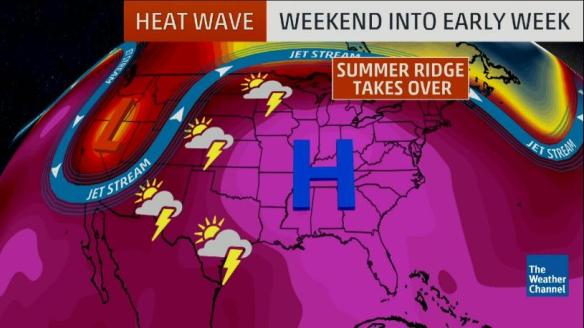
The weather has a significant influence on almost one-third of the world’s buying everyday. “The old paradigm of business and weather was cope and avoid,” says The Weather Channel’s vice president for weather analytics. “With [big data] technology, the paradigm is now anticipate and exploit.”
The Weather Channel (TWC) is an American basic channel and satellite television company, owned by a consortium made up of Blackstone Group, Bain Capital, and NBCUniversal located in Atlanta, Georgia.
The channel has broadcast weather forecasts and weather-related news and analysis, along with documentaries and entertainment programming related to weather since 1982.
TWC provides numerous customized forecasts for online users through its website, weather.com, including home and garden, and event planning forecasts. Third-party web analytics providers Alexa and SimilarWeb rated the site as the 146th and 244th most visited website in the world respectively, as of July 2015. SimilarWeb rated the site as the most visited weather website globally, attracting more than 126 million visitors per month.
That massive web traffic is exactly how The Weather Channel has turned ‘Big Data’ into a completely new business.
TWC is before all a technology platform operator, which developed an extremely high-volume data platform, collecting and analyzing data from 3 billion weather forecast reference points, more than 40 million smartphones and 50,000 airplane flights per days, and serves 65 billion unique access to weather data each day.
TWC collects terabytes of data everyday and uses it not only to predict the weather in millions of locations, but also to predict what consumers in those locations will buy.
In a very savvy move TWC married more than 75 years’ worth of weather data with aggregated consumer purchasing data. For example, air-conditioners sales increases during hot weather, but folks in Atlanta suffer three days longer than people in Chicago before running out to buy one. Such analysis has created a whole new business for TWC – ‘Selling ads based on big data analytics’.
For example, P&G Pantene and Puffs brands buy ads based on TWC’s weather and consumption analytics. A women checking The Weather Channel app in a humid locale receives an ad for Pantene Pro-V Smooth, a product formulated to tame frizzy hair.
Checking the app again on low humidity day or drier area results in seeing an ad for a volumizing product instead. Similarly, a consumer looking at a high pollen forecast receives an ad for Puffs facial tissues, with the message, “A face in need deserves Puffs indeed.”

Currently, TWC is generating half of the company’s ad revenue to the business using web analytics.
Big data and web analytics helped TWC maintain an extensive online presence at weather.com and through a set of mobile applications for smartphones and tablet computers. These services are now administered by The Weather Channel’s former parent company, The Weather Company, which was sold to IBM in 2016. The Weather Channel continues to license its brand assets and weather data from IBM.
TWC’s case is the epitome of how effective use of big data and web analytics can lead to marketing opportunities. It also demonstrates how today’s big companies can advance through ‘Digital Marketing’ which can also help them to diversify and strengthening their business portfolios.
